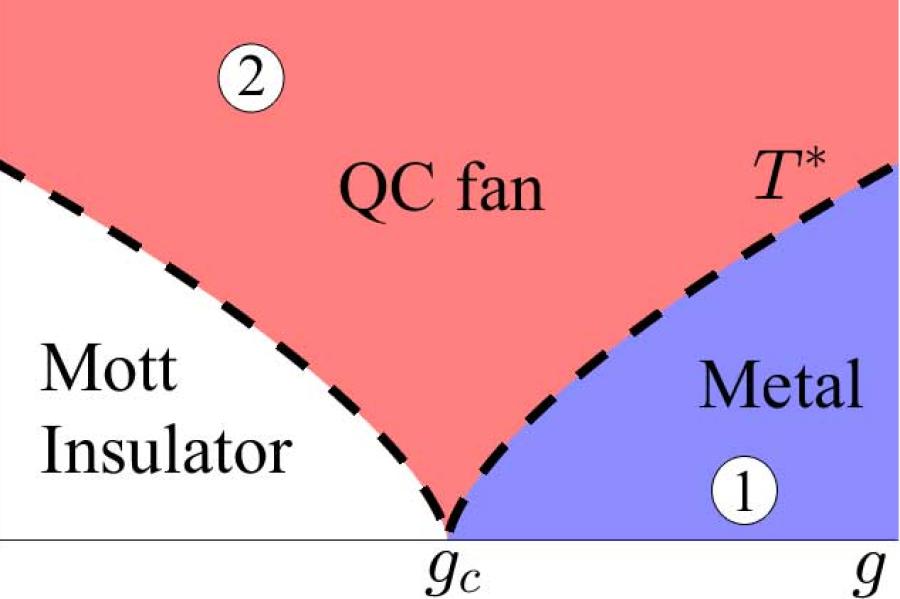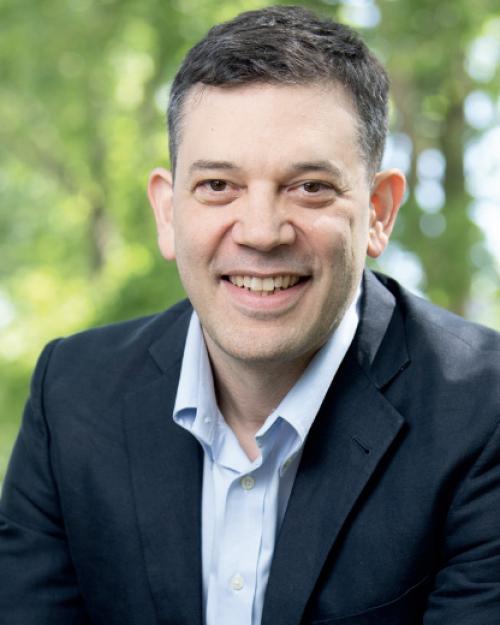There are stark differences between metals, through which electrons flow freely, and electrical insulators, in which electrons are essentially immobile. And despite the obvious difficulties in finding a way to switch back and forth from a metal to an insulator within one material, physicists are trying to figure out how.
“Say you want to put billions of circuit elements on a tiny chip and then control, at that microscopic scale, whether just one of the elements is metallic or insulating in a controlled fashion,” said Debanjan Chowdhury, assistant professor of physics in the College of Arts and Sciences (A&S). “It would be remarkable if you could control the microscopic device at the flick of a switch.”
Digging into recent past experimental results to try to reconcile experiment and theory, Chowdhury and doctoral candidate Sunghoon Kim found that even a tiny amount of imperfection, inherent in any real-life material, plays a key role in revealing the universal physics associated with the experimental metal-to-insulator transition. Understanding the physics behind this mysterious phase transition could lead to new complex microscopic circuits, superconductors and exotic insulators that could find use in quantum computing.
“Continuous Mott Transition in Moiré Semiconductors: Role of Long-Wavelength Inhomogeneities,” published Feb. 9 in Physical Review Letters.
In an influential 2021 paper, Cornell researchers led by Kin Fai Mak, professor of physics (A&S), and Jie Shan, professor of applied and engineering physics (Engineering), demonstrated a transition between a metal and an insulator in one material. A simultaneous experiment by researchers at Columbia University reported similar phenomena in a different material.
The experimental results, however, did not match longstanding theory predicting how the electrical resistance should behave, said Chowdhury, a co-author on the 2021 Cornell paper.
Scientists have used various strategies in the quest to turn a metal into an insulator, Chowdhury said. One is to add impurities to the material, which act as barriers and impede the motion of electrons. But this approach isn’t very flexible, he said: It’s easier to make the metal into an insulator than the other way around.
Another approach is to gradually deplete the supply of electrons in the metal – almost like “turning off a faucet,” he said. This can create an insulator, but typically not one that has any interesting properties, Chowdhury said.
“The real excitement with the 2021 Cornell experiment,” Chowdhury said, “is that they figured out how to turn the metal into an insulator without adding impurities to the system or changing the number of electrons.”
Mak and Shan used a moiré lattice – a recent innovation they are pioneering – to make a sandwich of two 2D layers of semiconducting materials, then applied an electric field in the perpendicular direction, to toggle the material between a metal and an insulator.
A theory proposal in 2008 by Senthil Todadri from the Massachusetts Institute of Technology predicted that as a material approached the point of transition from metal to insulator, the resistance of the material would jump by a universal amount – one governed only by fundamental constants of nature.
“The experiment did not find this to be true in practice,” Chowdhury said. “Yet at the same time, the experiment revealed other features which clearly demonstrated that the physics being observed during this transition was universal.”
Analyzing the 2021 experiment, Kim and Chowdhury kept in mind that the 2008 theory by Todadri, a co-author of the present study, was based on a perfect crystal with no imperfections.
“To resolve the puzzle,” Chowdhury said, “our starting conjecture was maybe that’s not how the transition actually manifests itself in the real device. Real devices will always have some imperfections. But is it possible that the imperfections help reveal the universal and interesting features of the metal-to-insulator transition?”
As the experimentalists changed the electric field, it is likely that different parts of the material underwent the metal-to-insulator transition at different values of the electric field because of a small number of inherent imperfections, Chowdhury said. Consequently, the flowing electrons must find a path through these “islands” of insulating regions, embedded in a “sea” of metal.
In order to account for the experimental observations, The researchers concluded that there are three kinds of regions in the material: metallic, which have a low resistance; insulators, which have a very large resistance; and metallic but with a universal large resistance governed only by fundamental constants of nature. Connecting the observations to a theory helps clarify the possible nature of the resulting insulator, which could have fascinating and useful properties, Chowdhury said.
It could have the makings of a quantum spin liquid, in which an electron’s charge is liberated from its spin, leading to a state where the electron effectively splinters apart into new kinds of emergent excitations. Because this exotic state could encode all kinds of information in the nonlocal excitations, it’s considered a key step toward quantum computing.
“We have known theoretically about the possible existence of quantum spin liquids in nature,” Chowdhury said, “but these experiments bring us closer to the dream of realizing them in the laboratory.”
This research was funded in part by the United States-Israel Binational Science Foundation, the United States Department of Energy and the Simons Foundation.





